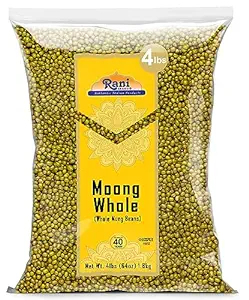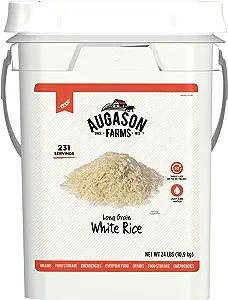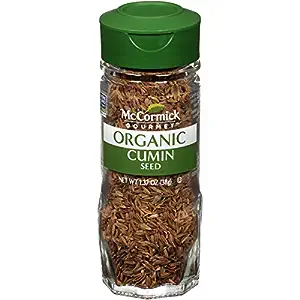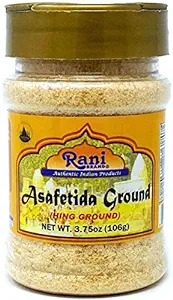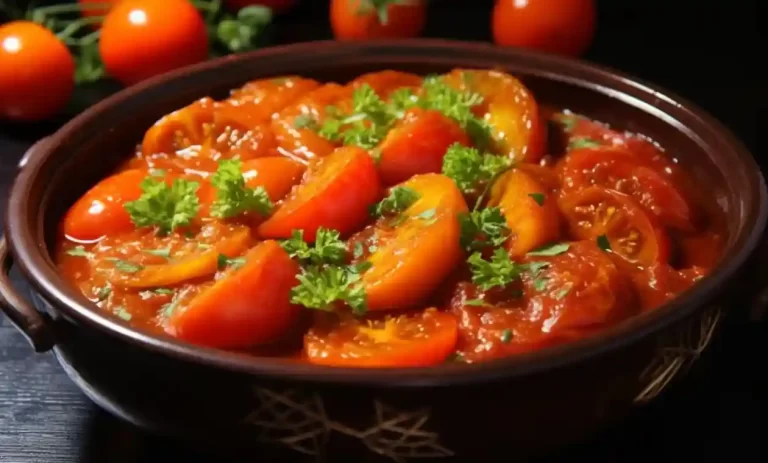South Indian Pesarattu: Try It Today
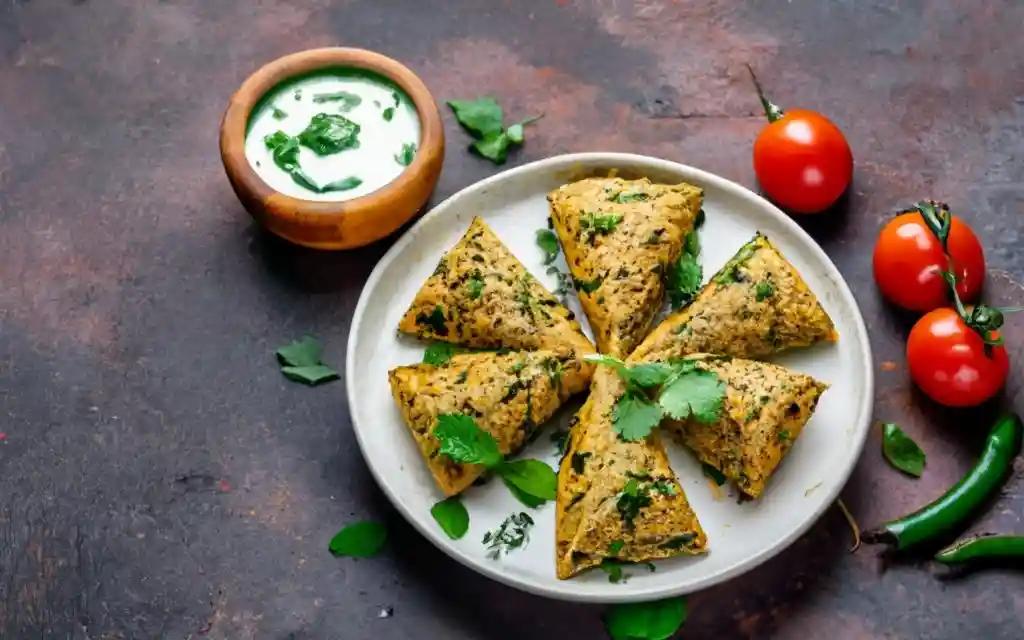
Pesarattu, often hailed as the “Green Gram Dosa,” is a cherished gem in the treasure trove of South Indian cuisine. Its cultural significance is deeply rooted in the rich culinary heritage of South India, particularly in the states of Andhra Pradesh and Telangana. In this introduction, we will embark on a flavorful journey, exploring the history, cultural importance, and the irresistible appeal of this beloved delicacy.
Pesarattu’s cultural significance transcends its status as a mere breakfast dish. It embodies the traditions and flavors that have been passed down through generations in South Indian households. This green gram-based crepe is often prepared during festivals, auspicious occasions, and as a symbol of hospitality to guests.
In Andhra Pradesh, pesarattu holds a special place during the festival of Sankranti, where it is served with a delectable accompaniment of coconut chutney and ginger pickle. It’s not just a dish; it’s a part of the cultural tapestry that binds families and communities together. Pesarattu is a testament to the South Indian culinary philosophy of combining health with flavor, making it a beloved and enduring tradition.
Now, picture this: a thin, crispy crepe, speckled with vibrant green hues, sizzling on a griddle. As it cooks, the air is filled with the aroma of freshly ground green gram and spices. The first bite is a revelation—a delightful crispness gives way to a soft, flavorful interior. Pesarattu offers a medley of tastes, from the nutty undertones of green gram to the subtle heat of green chilies.
What sets pesarattu apart is its versatility. It can be enjoyed with a myriad of accompaniments, from the classic coconut chutney to tangy tomato chutney or fiery ginger pickle. Pesarattu is not just a breakfast; it’s a canvas for culinary creativity.
The allure of pesarattu lies not only in its taste but also in its nutritional profile. It’s packed with proteins, fiber, and essential nutrients, making it a healthy choice to kickstart your day.
As we delve deeper into this blog, we’ll not only guide you through the process of making perfect pesarattu but also introduce you to its intriguing variations and our special twist on this South Indian classic. Get ready to embark on a culinary adventure that celebrates tradition, taste, and the timeless allure of pesarattu.
Ingredients
Before we embark on the culinary journey of making sumptuous pesarattu, let’s take a look at the key ingredients you’ll need to prepare this South Indian delicacy. These ingredients are not just the building blocks of the dish; they are the essence of its flavor and character:
- Green Gram (Moong Dal): At the heart of pesarattu lies the humble green gram, also known as moong dal. It serves as the primary ingredient, imparting a nutty and earthy flavor to the crepe. Moong dal is not just delicious but also highly nutritious, being rich in proteins and dietary fiber.
- Rice: Rice is the supporting actor in this recipe, adding a light and crispy texture to the pesarattu. It helps in achieving the perfect consistency for the batter, ensuring that the crepes turn out just the way they should.
- Green Chilies: These little green powerhouses are what give pesarattu its signature spiciness. Depending on your heat preference, you can adjust the quantity of green chilies. They add a vibrant kick to the dish.
- Ginger: Fresh ginger lends a hint of warmth and zest to the pesarattu. It’s a crucial ingredient that contributes to the overall flavor profile.
- Cumin Seeds: Cumin seeds provide a subtle earthy and slightly nutty taste to the batter. They complement the other spices and ingredients beautifully.
- Asafoetida (Hing): A pinch of asafoetida not only enhances the flavor but also aids in digestion. It’s a common seasoning in South Indian cuisine, adding a unique touch to pesarattu.
- Salt: Salt is the flavor enhancer that brings all the ingredients together, balancing the flavors and making the pesarattu savory and delicious.
Now that you are familiar with the ingredients, let’s move on to the exciting part: preparing the pesarattu batter and exploring the various styles and variations of this South Indian delight.
Classic Pesarattu
In this section, we delve into the heart of South Indian culinary tradition by exploring the timeless and beloved Classic Pesarattu. This style encapsulates the essence of this iconic dish, offering a journey through its traditional preparation, historical significance, and providing essential details about its nutritional value and serving portions.
Classic Pesarattu is the original rendition of this South Indian delight, hailing from the heartland of Andhra Pradesh and Telangana. To prepare this masterpiece, we begin by soaking whole green gram (moong dal) and rice overnight. This soaking process not only softens the grains but also kickstarts the fermentation, imparting a subtle tanginess to the batter.
The soaked green gram and rice are then ground into a smooth paste, along with green chilies, ginger, cumin seeds, and a pinch of asafoetida. The resulting batter is slightly thicker than your regular dosa batter, boasting a vibrant green hue and a fragrant, earthy aroma.
The batter is ladled onto a hot griddle, where it transforms into thin, crispy crepes. The art lies in spreading the batter evenly to achieve the perfect texture—crispy at the edges and soft at the center. Classic Pesarattu is traditionally served hot, accompanied by coconut chutney and ginger pickle, creating a symphony of flavors that dance on your taste buds.
This classic style of pesarattu is more than just a dish; it’s a piece of history on a plate. It’s believed to have been prepared for centuries in South Indian households, evolving into a cherished breakfast tradition. Its cultural significance extends to festivals, rituals, and family gatherings, where it symbolizes warmth, hospitality, and the culinary prowess of the region.
Classic Pesarattu is not just a gastronomic delight; it’s also a relatively healthy breakfast option. On average, one serving of Classic Pesarattu (approximately 2 medium-sized crepes) contains about 150-200 calories. The exact calorie count may vary depending on factors such as the size of the pesarattu and the oil used for cooking.
The serving size typically caters to one person, making it a satisfying and nutritious start to the day. Its balance of proteins, fiber, and essential nutrients makes it a favorite among health-conscious individuals and those who appreciate the rich flavors of South Indian cuisine.
As we continue our culinary journey, we will explore more styles and variations of pesarattu, each offering a unique twist to this South Indian classic. But for now, savor the simplicity and authenticity of Classic Pesarattu, as it captures the essence of a rich and flavorful tradition.
Pesarattu Variations
In this section, we embark on a flavorful journey through the world of Pesarattu Variations. While the classic Pesarattu holds a special place in South Indian cuisine, these variations add a touch of creativity and diversity to the traditional dish. We will explore some popular variations, unraveling their unique characteristics, and providing essential details about their calorie content and serving sizes.
Pesarattu, known for its versatility, has inspired countless creative variations over the years. Each variation brings its own distinct flavor profile and culinary personality to the table. Here, we highlight a few of the most beloved Pesarattu variations:
Upma Pesarattu
- What Sets It Apart: Upma Pesarattu is a delightful combination of the classic Pesarattu and upma, a South Indian semolina-based dish. It’s essentially a two-in-one treat, where the crispy Pesarattu encases a flavorful upma filling.
- Calorie Information: A serving of Upma Pesarattu contains approximately 250-300 calories, thanks to the added upma filling.
- Serving Size: One Upma Pesarattu is typically a hearty meal for one person.
Adai Pesarattu
- What Sets It Apart: Adai Pesarattu is a fusion of two South Indian favorites—Adai (a thick lentil pancake) and Pesarattu. It combines the goodness of both dishes, offering a rich and nutritious alternative.
- Calorie Information: A single Adai Pesarattu carries around 180-220 calories, making it a wholesome choice.
- Serving Size: One Adai Pesarattu serves one person comfortably.
Mysore Pesarattu
- What Sets It Apart: Mysore Pesarattu takes a spicy twist with the addition of a fiery red chutney spread on the inside of the crepe. It’s known for its bold flavors and a touch of heat.
- Calorie Information: A serving of Mysore Pesarattu typically has around 200-240 calories.
- Serving Size: One Mysore Pesarattu is a satisfying meal for one person.
Sprouted Pesarattu
- What Sets It Apart: Sprouted Pesarattu incorporates sprouted moong dal into the batter, adding a nutritious boost to this already healthy dish. It’s perfect for those seeking extra nutrients.
- Calorie Information: A serving of Sprouted Pesarattu usually contains about 160-200 calories.
- Serving Size: One Sprouted Pesarattu caters to a single serving.
These Pesarattu variations not only diversify the flavors but also cater to various dietary preferences. Whether you prefer the comforting fusion of Upma Pesarattu or the fiery kick of Mysore Pesarattu, there’s a Pesarattu variation to suit every palate.
With their unique taste profiles and nutritional benefits, these variations offer a delightful twist to the traditional Pesarattu, showcasing the creative genius of South Indian cuisine. Next, we’ll explore our special “Taste Recipe Special Pesarattu” to add an extra layer of innovation to our culinary adventure.
Taste Recipe Special Pesarattu
Welcome to a special segment of our Pesarattu journey, where we unveil our unique twist on this South Indian classic – the Taste Recipe Special Pesarattu. In this section, we’ll reveal the secrets behind our special variation and why it’s truly exceptional.
Our Taste Recipe Special Pesarattu is a delightful fusion of tradition and innovation, designed to tantalize your taste buds and leave a lasting impression. What sets it apart from the rest is a combination of carefully selected ingredients, cooking techniques, and a dash of creativity.
Why It’s Special:
- Multigrain Magic: We take the traditional moong dal and rice base and enrich it with a blend of multigrains. This addition not only enhances the nutritional value but also brings a unique texture and earthy depth of flavor to our Pesarattu.
- Fresh Herb Infusion: The secret to our special Pesarattu lies in the infusion of fresh herbs. We introduce a medley of aromatic herbs like curry leaves, coriander, and mint, finely chopped and folded into the batter. These herbs impart a refreshing burst of flavors and a vibrant green hue.
- Spice Symphony: To elevate the taste, we introduce a special spice blend, featuring roasted cumin seeds, black peppercorns, and a pinch of asafoetida. This blend adds layers of complexity and a subtle spiciness to each bite.
- The Crispy Crunch: Our cooking technique ensures that each Pesarattu boasts a perfect balance of crispiness and tenderness. The edges turn golden brown and crispy, while the center remains soft and luscious.
- Versatile Pairings: What makes our Taste Recipe Special Pesarattu truly exceptional is its adaptability. It pairs beautifully with a wide range of chutneys, pickles, and even yogurt. You can customize it to suit your preferred level of spiciness and tanginess.
In essence, our Taste Recipe Special Pesarattu is a tribute to the rich heritage of South Indian cuisine, with a modern twist that enhances its taste and nutritional value. It’s a culinary marvel that pays homage to tradition while embracing innovation.
As we continue this culinary adventure, you’ll have the opportunity to recreate our Taste Recipe Special Pesarattu in your own kitchen, discovering the magic that happens when tradition meets innovation. Stay tuned for the step-by-step guide on how to prepare this unique masterpiece and savor the distinctive flavors it brings to your table.
Our Recommended Ingredients
Green Gram
Green gram, also known as moong dal, is a versatile and nutritious legume that’s a staple in South Asian cuisine. Its mild, nutty flavor and quick cooking time make it a go-to choice for a variety of dishes, from traditional Pesarattu to hearty soups and stews.
Rice
Rice, the staple grain of countless cultures worldwide, serves as the backbone of many beloved dishes. It’s the foundation of Pesarattu, contributing to its unique texture and flavor. Whether you prefer long-grain, short-grain, or aromatic varieties, rice is a kitchen essential.
Cumin Seeds
Cumin seeds are small but mighty flavor enhancers that play a pivotal role in Indian cuisine. They infuse dishes with a warm, earthy aroma and a hint of citrusy spice. Cumin seeds are a key ingredient in Pesarattu, adding depth to its taste.
Asafoetida
Asafoetida, often referred to as “hing,” is a unique spice known for its pungent aroma. It’s a secret ingredient that enhances the taste of Pesarattu and many other Indian dishes. A pinch of asafoetida goes a long way in providing that extra depth of flavor.
Tips and Recommendations
Preparing the perfect Pesarattu, whether it’s the classic version or one of its delightful variations, requires a combination of skill and finesse. In this section, we share pro tips that will help you master the art of creating the perfect Pesarattu in your own kitchen.
- Soaking Magic: Ensure you soak the green gram (moong dal) and rice for at least 4-6 hours or, preferably, overnight. This extended soaking period softens the grains and promotes better fermentation, resulting in a smoother and more flavorful batter.
- Balanced Batter: Achieve the ideal batter consistency – it should be slightly thicker than regular dosa batter. This consistency ensures that your Pesarattu turns out crispy on the edges and soft at the center.
- The Right Temperature: Heat your griddle or non-stick pan to the right temperature before pouring the batter. A medium-high heat is generally recommended. To check if it’s ready, sprinkle a few drops of water on the surface – they should sizzle and evaporate quickly.
- Gentle Spreading: When ladling the batter onto the griddle, use the back of the ladle to gently spread it in a circular motion from the center outwards. This technique ensures that the Pesarattu cooks evenly and attains the desired thickness.
- Spice Sensation: Experiment with the spiciness level by adjusting the quantity of green chilies to your liking. Remember, Pesarattu is all about balancing flavors, so tailor it to your taste.
For those with specific dietary preferences or restrictions, here are some recommendations and ingredient substitutions to make Pesarattu a dish that suits your needs:
- Gluten-Free Option: Pesarattu is naturally gluten-free as it doesn’t contain wheat or gluten-based flours. Ensure that the other ingredients you use are also gluten-free to maintain this aspect.
- Vegan Twist: If you follow a vegan diet, you can substitute ghee (clarified butter) with vegetable oil for greasing the griddle. Additionally, for the filling, you can use plant-based yogurt and skip any dairy-based accompaniments.
- Low-Calorie Variation: To reduce the calorie content, you can make Pesarattu with minimal oil or use a non-stick pan with minimal greasing. Opt for a sprouted moong dal batter for added nutritional benefits.
Elevate your Pesarattu experience with these serving suggestions and garnishing ideas:
- Chutney Companions: Serve Pesarattu with a variety of chutneys such as coconut, tomato, peanut, or mint. These complement the flavors beautifully.
- Pickle Pairing: A tangy mango pickle or ginger pickle adds a delightful zing to your Pesarattu. The combination of savory and spicy flavors is a match made in culinary heaven.
- Yogurt Harmony: A dollop of plain yogurt or raita (yogurt with spices and herbs) can provide a cooling contrast to the spiciness of Pesarattu.
- Fresh Herb Finish: Garnish your Pesarattu with a sprinkle of freshly chopped coriander leaves or curry leaves for a burst of freshness and color.
- Vegetable Medley: Add a layer of thinly sliced onions, tomatoes, or bell peppers to your Pesarattu before flipping it. These veggies not only enhance the taste but also contribute to the visual appeal.
With these tips, dietary recommendations, and serving ideas, you have all the tools you need to create a delightful Pesarattu experience tailored to your preferences. Whether you’re aiming for traditional perfection or a modern twist, Pesarattu is a canvas for culinary creativity that’s sure to satisfy your taste buds.
In Crux
In our culinary exploration of Pesarattu, we’ve unveiled a dish that embodies the soul of South Indian cuisine. This humble yet extraordinary creation, with its roots deep in tradition, is a testament to the richness of flavors and the warmth of South Indian hospitality. In this concluding section, we summarize the essence of Pesarattu and invite you to savor the experience it offers.
Pesarattu, in all its forms, represents a harmonious blend of flavors, textures, and history. From the classic rendition that tells tales of tradition to the innovative variations that add modern flair, Pesarattu offers a spectrum of tastes that cater to every palate. It’s a dish that transcends boundaries, bringing people together over a shared appreciation for good food and timeless recipes.
At its core, Pesarattu is a reflection of the South Indian way of life – wholesome, balanced, and filled with zest. It’s a reminder of the region’s love for fresh ingredients, aromatic spices, and the art of culinary finesse. Whether enjoyed as a comforting breakfast, a festive treat, or a daily indulgence, Pesarattu has the power to transform meals into memorable experiences.
Our culinary journey through the world of Pesarattu would remain incomplete without inviting you to be a part of it. We encourage you to take up the apron, gather the ingredients, and embark on your own adventure in the kitchen. Making Pesarattu is not just about cooking; it’s about creating moments of joy, sharing traditions, and relishing the art of South Indian cuisine.
As you prepare Pesarattu, whether it’s the classic version, a creative variation, or our very own Taste Recipe Special Pesarattu, savor each step of the process. Embrace the aromas, the sizzles, and the vibrant colors that fill your kitchen. Allow yourself to connect with the centuries-old tradition and the spirit of innovation that defines Pesarattu.
And once you’ve prepared and savored your creation, we invite you to share your experiences with us. Tell us about the flavors that danced on your taste buds, the memories it evoked, and the joy it brought to your table. Connect with us and with food enthusiasts from around the world to celebrate the magic of Pesarattu.
In closing, Pesarattu is more than just a dish; it’s a story, a tradition, and a culinary adventure waiting to be experienced. So, go ahead, embrace the tradition, savor the innovation, and make Pesarattu a part of your culinary repertoire. Happy cooking and bon appétit!
FAQs about Pesarattu
Is Pesarattu gluten-free?
Yes, Pesarattu is naturally gluten-free as it doesn't contain any wheat or gluten-based flours. It's made primarily from green gram and rice, making it a suitable choice for those with gluten sensitivities.
Can I make Pesarattu without fermentation?
Yes, you can make an instant version of Pesarattu without fermentation. Instead of soaking the ingredients overnight, you can blend soaked green gram and rice into a batter and prepare it immediately. While it may lack the slight tanginess of fermented Pesarattu, it's a quicker alternative.
What is the calorie count of Pesarattu?
The calorie content of Pesarattu can vary depending on its size and ingredients used. On average, one serving (2 medium-sized Pesarattu) contains about 150-200 calories. Using less oil for cooking can further reduce the calorie count.
Can I make Pesarattu with split green gram (moong dal)?
Yes, you can use split green gram to make Pesarattu, but it might result in a slightly different texture. Whole green gram is typically preferred for its unique taste and smooth batter consistency, but split green gram can also be used if that's what you have on hand.
What are common accompaniments for Pesarattu?
Pesarattu pairs wonderfully with a variety of accompaniments. Traditional choices include coconut chutney, ginger pickle, and tamarind chutney. You can also serve it with yogurt, sambar, or a medley of freshly chopped vegetables for added flavor.
Can I make Pesarattu with a different type of lentil?
While green gram (moong dal) is the traditional choice for Pesarattu, you can experiment with other lentils like yellow moong dal or masoor dal. Each will bring its unique flavor and texture to the dish, offering a delightful twist.
What is the difference between Pesarattu and Adai?
Pesarattu and Adai are similar in that they are both South Indian pancakes made from lentils and rice. However, Pesarattu is primarily made with green gram (moong dal) and is thinner and crisper. Adai, on the other hand, uses a mix of lentils and is thicker and denser.
Can I make Pesarattu ahead of time?
Pesarattu is best enjoyed fresh, but you can make the batter ahead of time and refrigerate it for up to a day. However, the texture may change slightly upon refrigeration. It's recommended to cook the Pesarattu just before serving for the best taste and texture.
Are there vegan options for Pesarattu?
Yes, Pesarattu can be easily adapted for a vegan diet. Simply use vegetable oil for greasing the griddle instead of ghee (clarified butter), and for the filling, opt for plant-based yogurt. Accompany it with vegan chutneys or pickles for a complete vegan Pesarattu experience.

